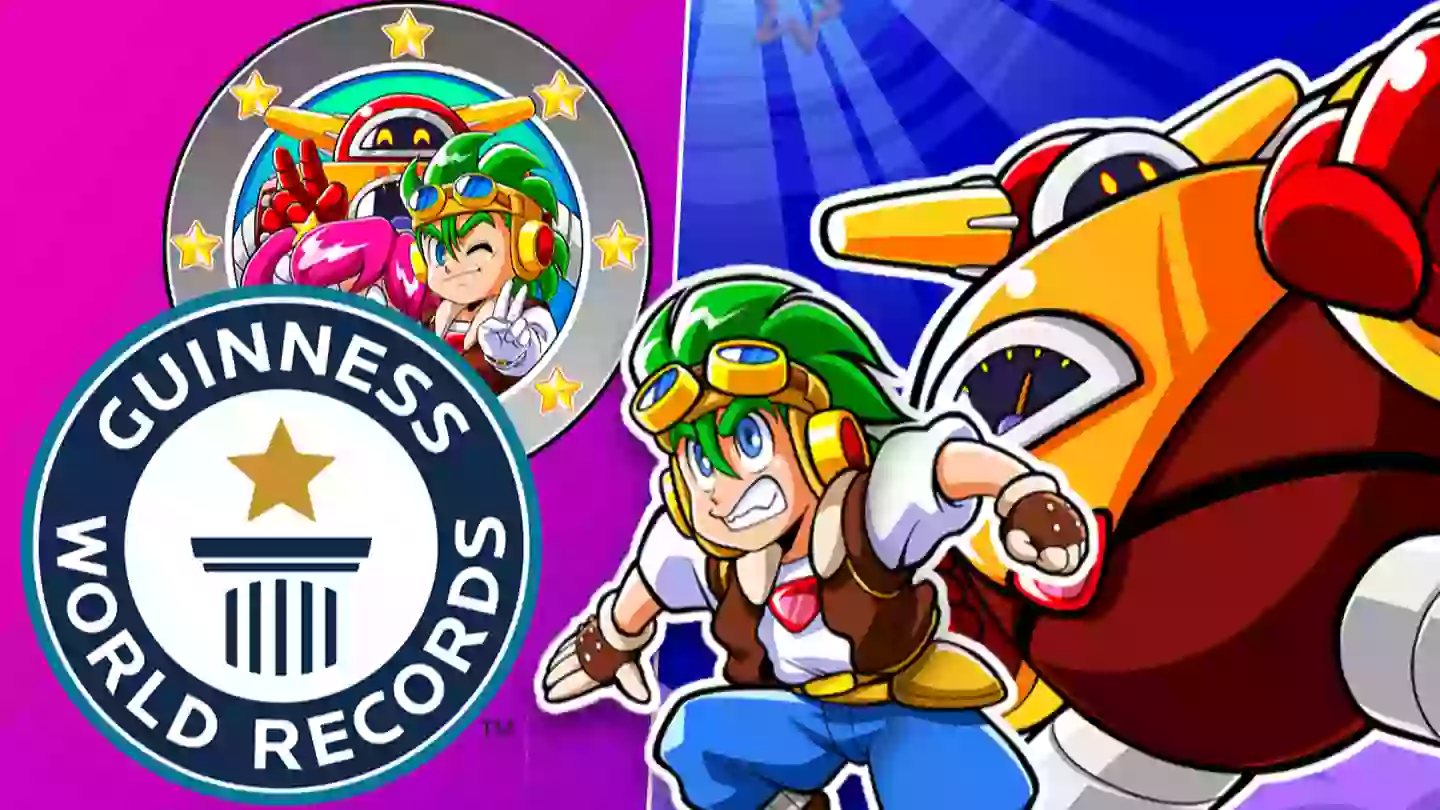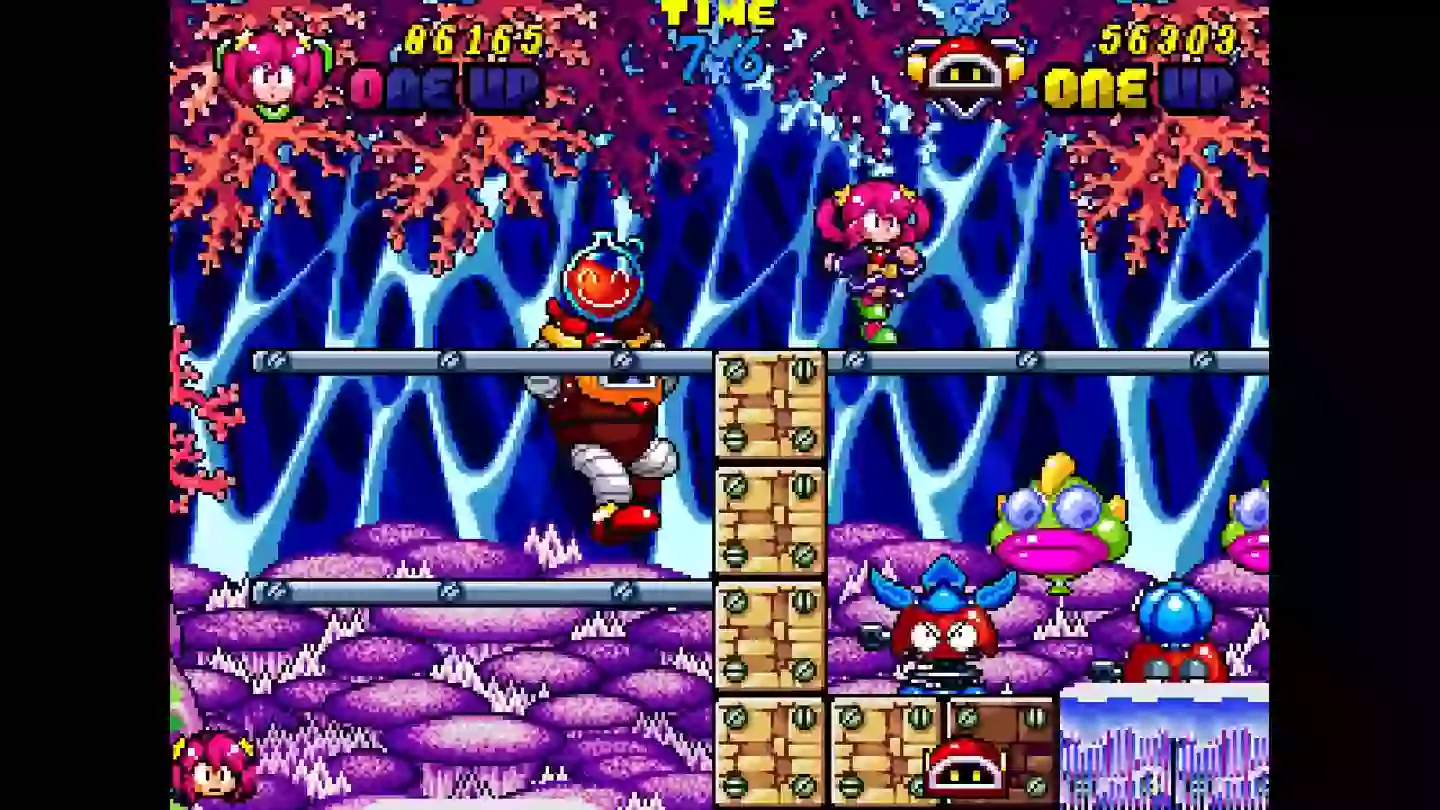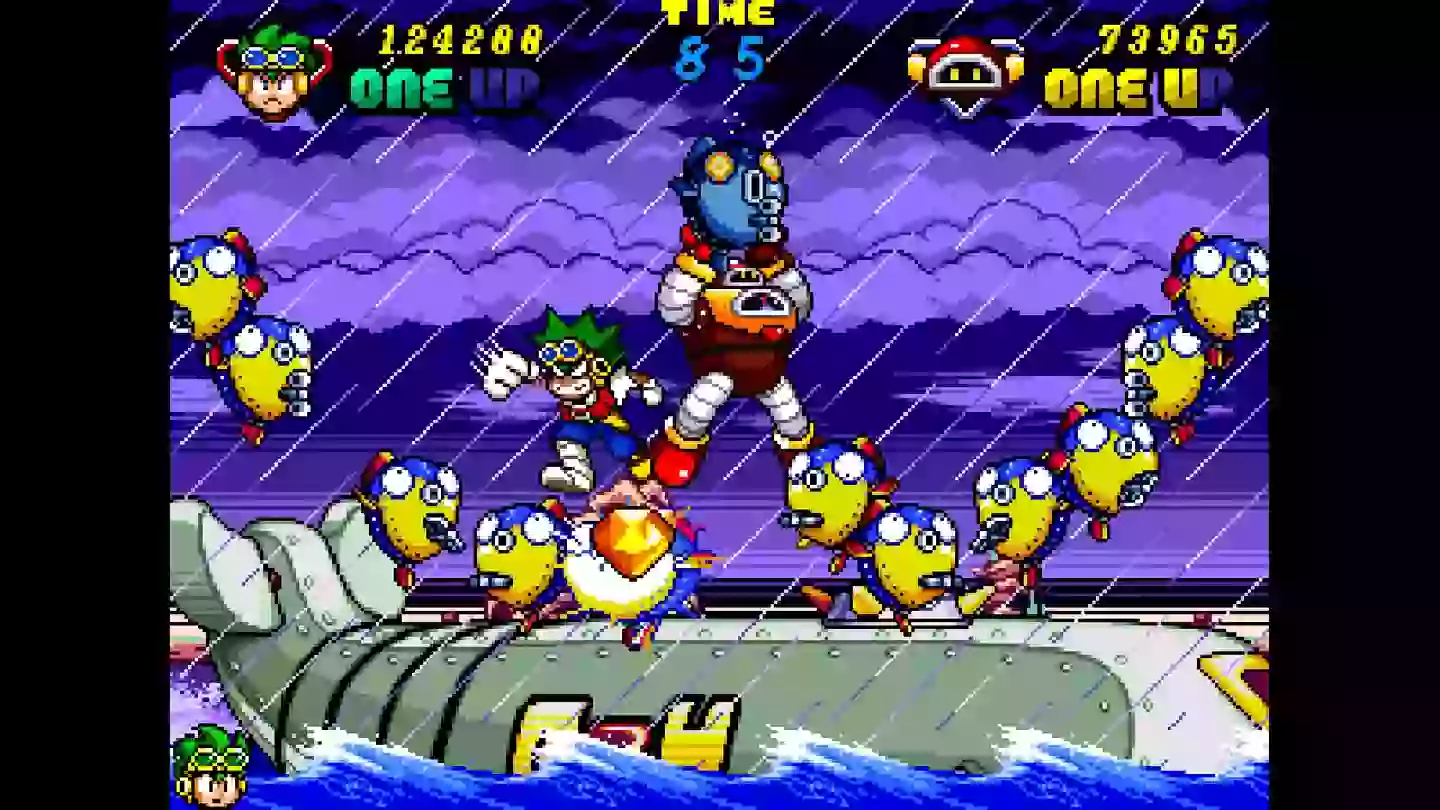
Amid the rush of year-end best-of lists, and 2022’s excellent raft of new games so far, you can be totally forgiven for missing the release of Clockwork Aquario. The side-scrolling action-platformer, all pixel-perfect art and intuitive arcade-style gameplay, snuck out onto PlayStation 4 and Nintendo Switch very late in 2021, and will arrive on Xbox and PC later in 2022. But this is a game with a special claim to fame.
Clockwork Aquario is developed by Westone, makers of the Wonder Boy series (that DNA sure flows through the veins of this game) and several arcade titles for SEGA’s System 16B board, including Riot City and Aurail. And if you know your Japanese gaming history, here’s where the first alarm starts to sound. This is a game released in 2021 (and 2022), but developed by a studio that produced its most notable works in the 1980s and ‘90s and went out of business in 2014 – so what gives? And then there’s the Guinness World Records logo, right there in the thumbnail for this article. Might as well skip to the chorus.
Check out the official trailer for Clockwork Aquario below
Upon its release, Clockwork Aquario became the world record holder for the longest development period for a video game, stretching to 28 years and 81 days. Work that began at Westone in the early 1990s was completed in the 21st century by United Games Entertainment, and the home console release we can now enjoy, the best part of three decades after when we should have encountered this slight but delightful adventure, is published by ININ. As this tweet from the game’s composer Shinichi Sakamoto shows, the Clockwork Aquario team is now the collective holder of a very impressive record, one that will take some doing to ever be beaten.
Advert
Nearly 30 years to come out, then – but as an arcade game first and foremost, Clockwork Aquario isn’t an experience that comes close to outstaying its welcome. While the modern console releases feature a number of extras – different difficulty modes, the excellent soundtrack (Sakamoto’s work here has strong 16-bit Sonic vibes), a gallery – the five levels that make up the game can be beaten in under 30 minutes. Which you might see as poor value for money in the modern era of gaming, even at the reasonable RRP of £16.99 on the eShop – but Clockwork Aquario is a game out of time, and lovers of ‘90s arcades will get a lot out of this colourful and cheery title that could have so easily been locked away in history’s swollen vault of never-finished video games.

The longevity of the game comes from going from simply pumping in endless virtual quarters to defeat the game’s big bad, Dr Hangyo, from taking over the world, to going start to finish on a single credit. It’s certainly doable, but the last two stages have some very challenging sequences where your reactions will be really tested. The player can choose from one of three characters – Huck Rondo, Elle Moon and the robotic Gush – and while the three vary wildly aesthetically, the basic controls remain consistent: there’s one button to jump, and another to attack. Simple, effective, timeless.
Enemies can sometimes be destroyed by jumping on top of them, Super Mario style, but others will damage you if not attacked with a swing of your knuckles first. Striking a baddie will stun them, and they can then either be thwacked again to be destroyed for points (and sometimes pick-me-up bonuses) or thrown into other enemies or obstacles. If taken on in two-player co-op, the other player can also be tossed in the same way. Should any player character take one hit, their appearance becomes battered and dishevelled; a second, and a life is lost. Healing potions can be found in each level, restoring your double-hit protection, as can a brief invincibility power-up that’s especially handy against the bosses.
Advert

Speaking of the bosses, every level has one sub-boss that needs to be overcome before a Robotnik-like face-off with Dr Hangyo, who’ll be piloting some kind of diabolical but also incredibly cute-looking mech that may or may not spawn teeny versions of itself to be chucked right back at it. The sprites are bright and chunky and full of personality, with even the easiest enemies having a certain charm about them which comes through in how they’re drawn and animated. If you’ve ever enjoyed playing the likes of Sonic the Hedgehog (think more 3 and CD than the Mega Drive original), Ristar, Dynamite Headdy or the later Wonder Boy games, Clockwork Aquario will feel both immediate and like a long-lost favourite you never knew you needed in your gaming life. It’s a warm and fuzzy beauty of a blast from the past that never had its chance to shine decades ago – but even in the here and now, its appeal hasn’t dulled at all.
The game’s designer, Ryuichi Nishizawa, has praised modern social media for helping Clockwork Aquario finally see the light of day. “If it weren’t for social networking… Aquario would never have been brought back to life,” he told Touch Arcade in 2021. “The fact that the existence of the cancelled Aquario game was spread through the internet and connected us to people who had the will to restore it is worthy of being called a miracle. I am truly grateful for such a wonderful experience.” In an era where much of the social media engagement around video games can be exceptionally toxic, I think it’s wonderful that these same platforms enabled a gem like this to be revived, polished and published for the world. It’s a treat to be savoured, and celebrated.
Clockwork Aquario is out now for Nintendo Switch (version tested) and PlayStation 4, with PC and Xbox versions due later in 2022. Code used for this coverage was supplied by the publisher.
Topics: Retro Gaming, Nintendo Switch